
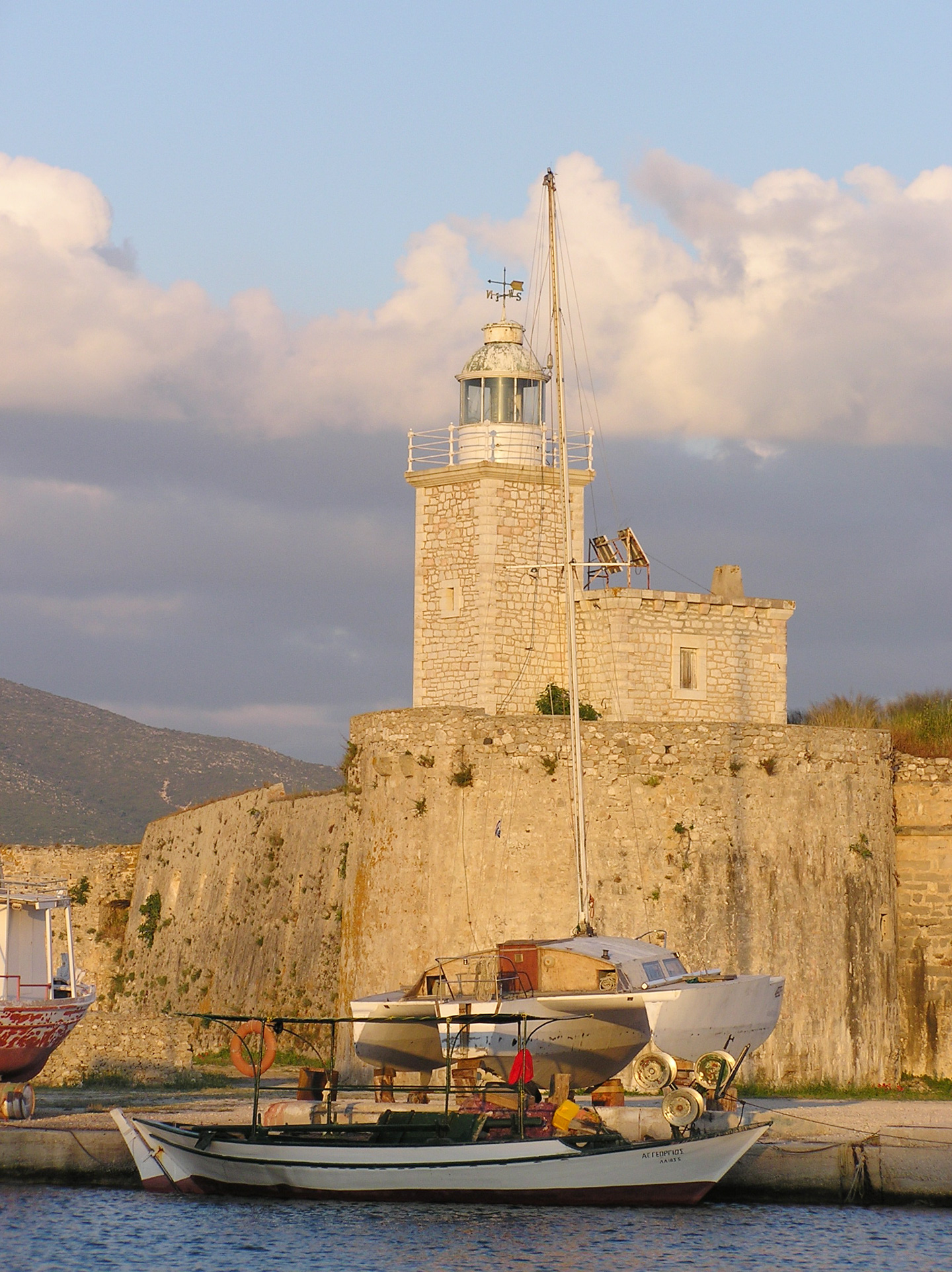
At the way in to Lefkada town, by Ammoglossa, the fort of Aghia Mavra stands proudly, a model of fortification architecture of the Middle Ages, with a central core in the shape of an irregular heptagon reinforced at its seven corners with bastions and three external ramparts. It protected the capital from the first decade of the fourteenth century until 1684. There are indications that it was built on the site of an ancient temple to Aphrodite Aeniada.
According to tradition the first rampart as built near the year 1300 by the Venetian ruler Giovanni Orsini, who was given Lefkada as the dowry of his bride, the daughter of the Despot of Epirus Nikiforos I. It was captured in 1479 by the Turks who, under Bayezid II constructed a great bridge with 360 arches standing on stilts supporting the clay pipes carrying water to the castle from a spring in the area of Megali Vryssi. The bridge was destroyed by quakes, but some of the stilts are still underwater in the lagoon.
Inside the fort ruins still stand of buildings from the days of Venetian dominaton – barracks, ammunition stores, administrative buildings, a hospital, dwellings – on which some work was done during the British occupation. There is a lighthouse on the small bastion of the NW side and Davis’s cenotaph, and on the eastern is the church of Aghia Mavra, celebrated on 3 May. The fort, the walled town and the quarters on the outside took their name from this church.
Operating hours: Open daily 08:00-15:00, except Mondays
Admission: General 2€, reduced 1€
Telephone: +30 2645026576
Address: Lefkada's entrance (floating bridge)
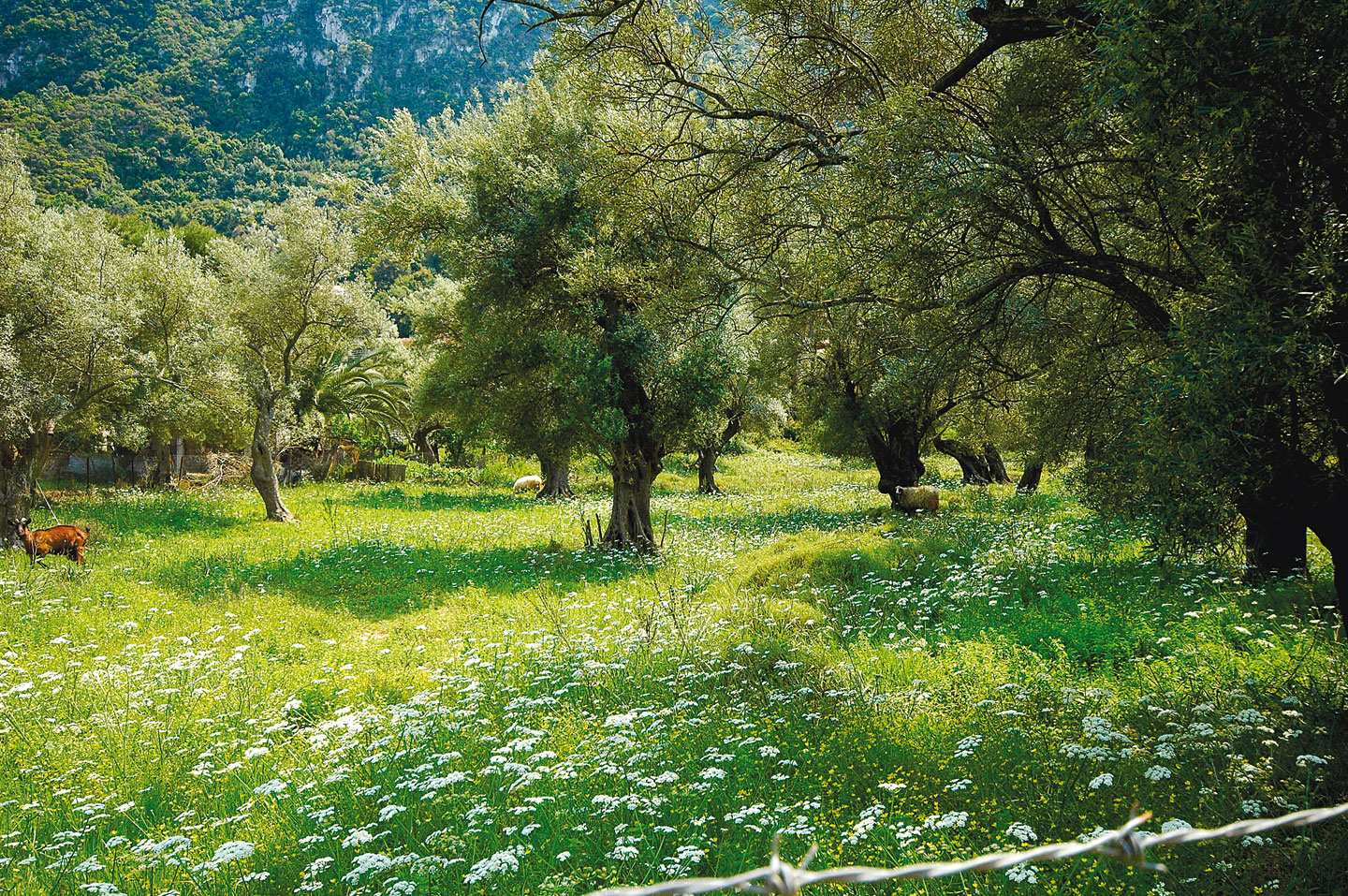
A historically unique and living environmental monument that is located in the northeast of the town of Lefkada. Its beauty was hailed by Agelos Sikelianos who described it as “the most beautiful forest he had known”. It is comprised by supercentenarian olive trees which were planted in 1684 with the support of the Venetians who took over the island and wanted to turn the people of Lefkada away from the sea and towards agriculture, for this reason it is called the venetian olive grove. In the next years, the Venetians promoted more intensively the cultivation of olive trees, imposing sanctions to those who did not comply and rewards to those who planted new ones. As a result, 44,169 olive trees were recorded in the census of 1770 all of which were planted in just 86 years.
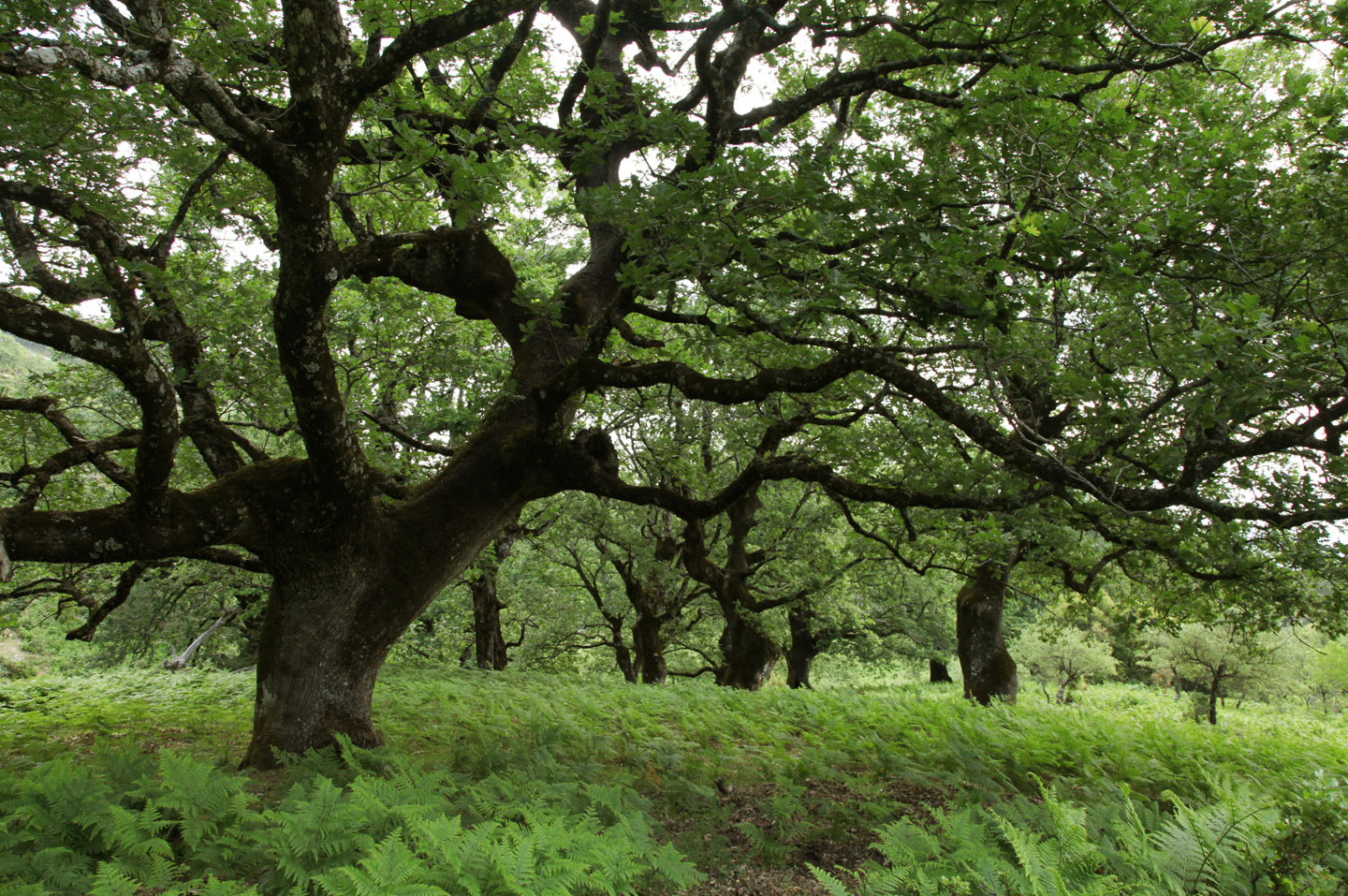
One of the most beautiful places in the mainland with unique fauna, a forest of a rare type of oak (Sikelianos writes in The Moonstruck: “Forest full of oaks on your peak”) and a magnificent landscape. This area with its formidable wild beauty is ideal for a hiking exploration. Reaching the top at the end of the route you will be rewarded with a stunning view of Lefkada’s small islands.
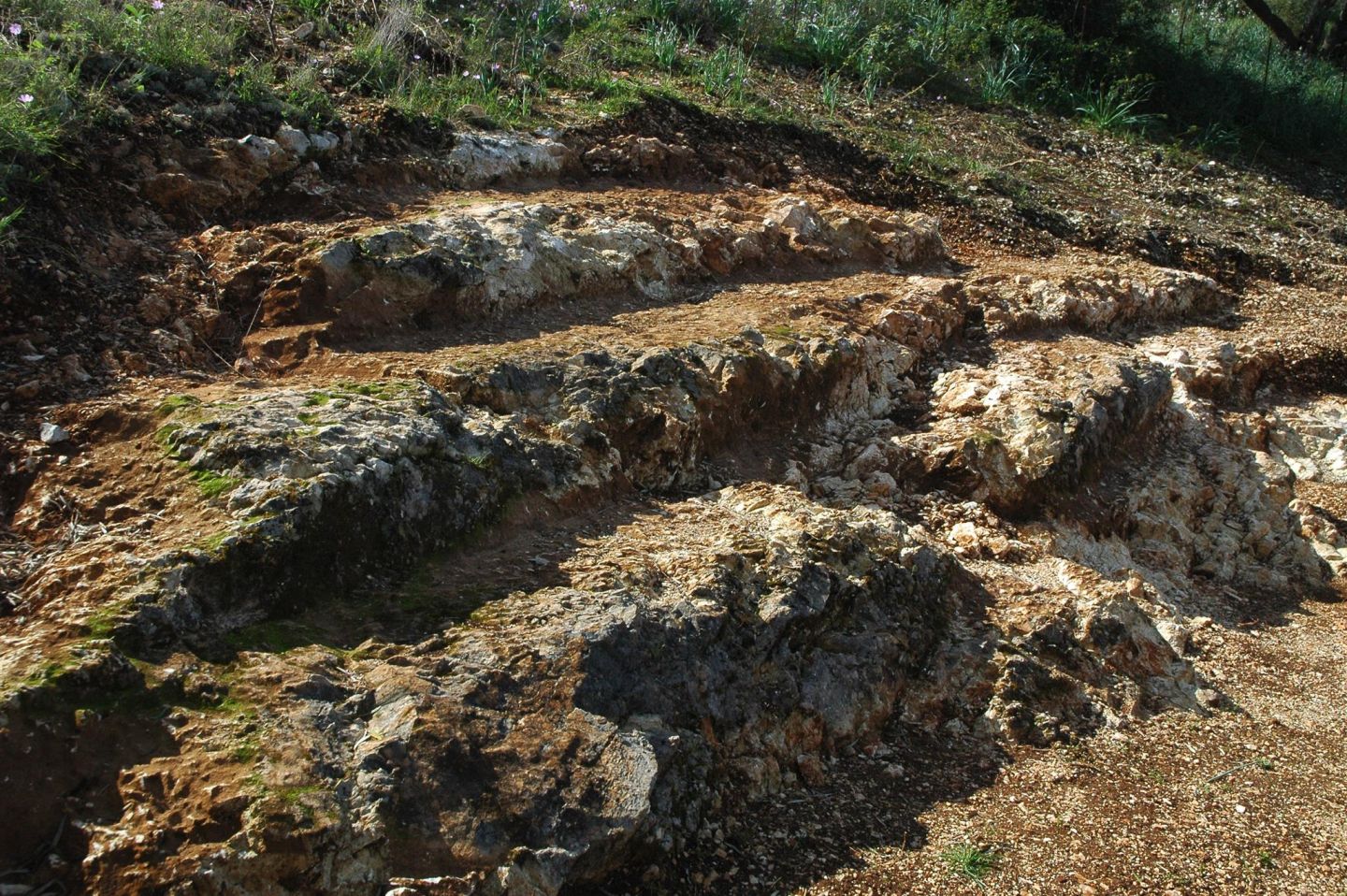
Two kilometers outside of the town of Lefkada, in the northeastern slope of the middle hill of “Kulmos”, lies the ancient theatre that was recently discovered by archaeological excavations. It is an ancient theatre of large dimensions, approximately 10,000 seats, the only one that has been discovered in the Ionian islands. So far our knowledge of it is pretty limited but its significance is beyond doubt.
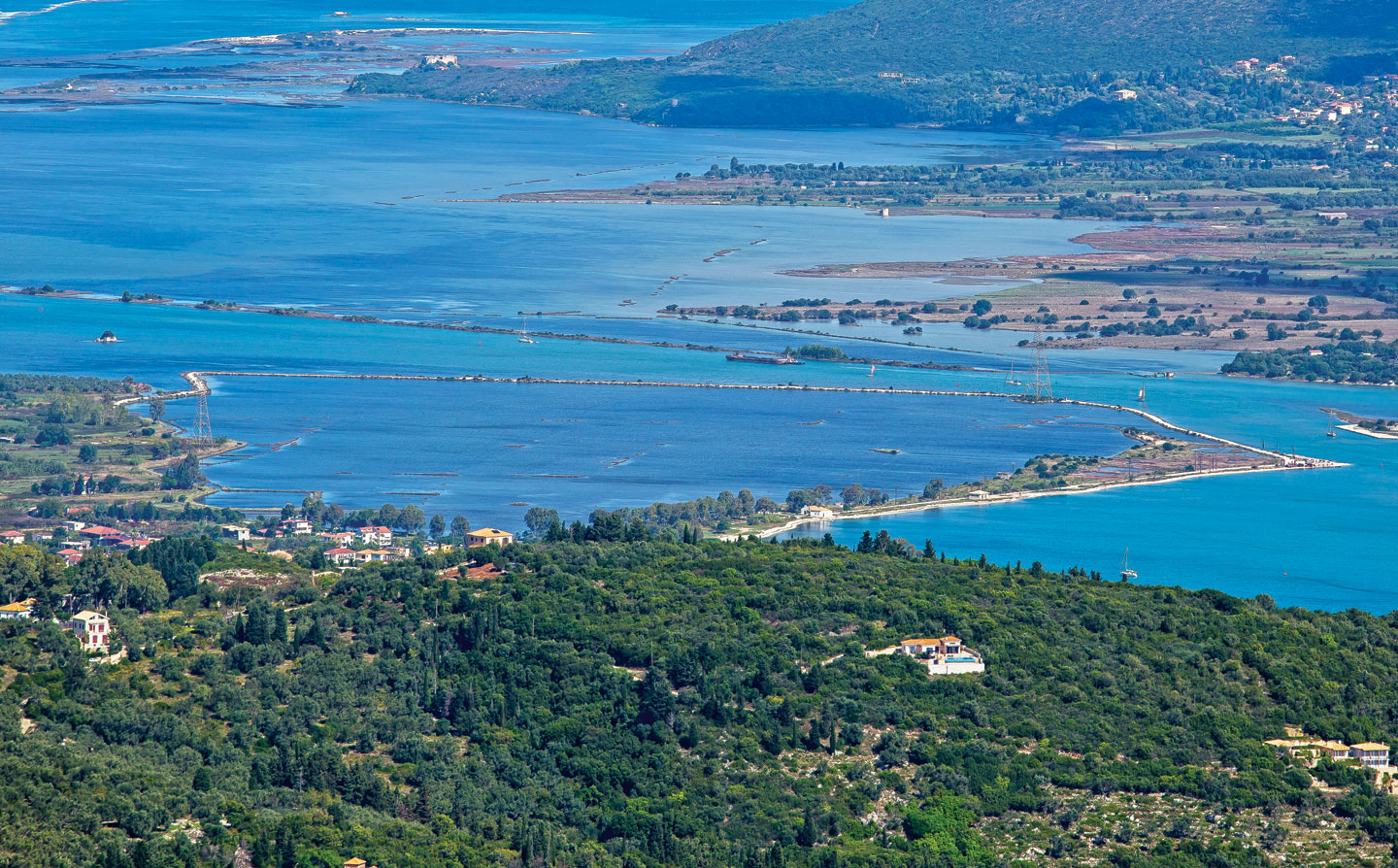
A protected industrial museum of great historical value which has been incorporated in the European ecological program Nature 2000. The existence of the salt pans is owed to the Venetian conquerors who in 1684 wanted to secure for themselves a large quantity and good quality salt production, so they constructed in this site the salt works. What permitted the sea water to evaporate was the fact that the area was protected from the waves, received a lot of sunlight during the summer months and humid southern winds. The salt works in Alexandros stopped operating in 1989.
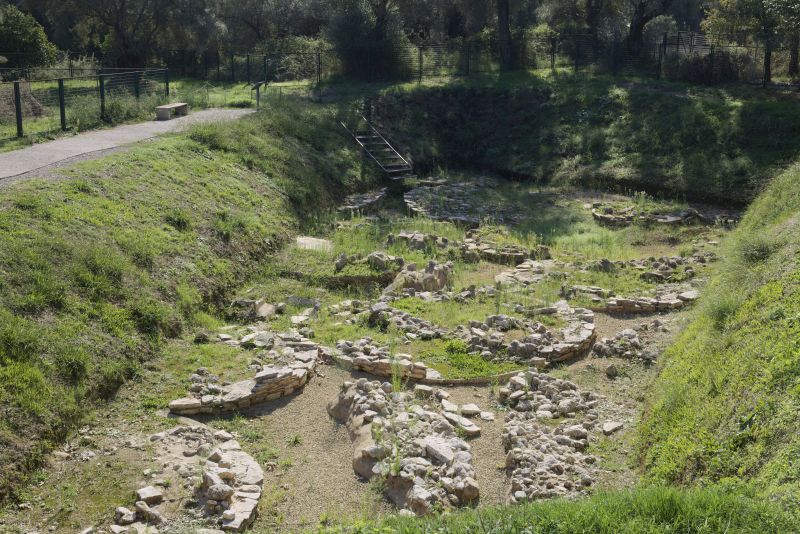
South of Nydri there are sites of special archaelogical interest. There are tombs and ruins of buildings dating to the Proto-Helladic II period of the third millennium BC. Among the finds are objects suggesting a stratified society and the existence of a ruling class. The German archaelogist Wilhelm Dörpfeld was the first to carry out excavations in the Nydri plain from 1901 to 1913. Many of his finds from these excavations are displayed in the Archaelogical Museum, in Lefkada town.
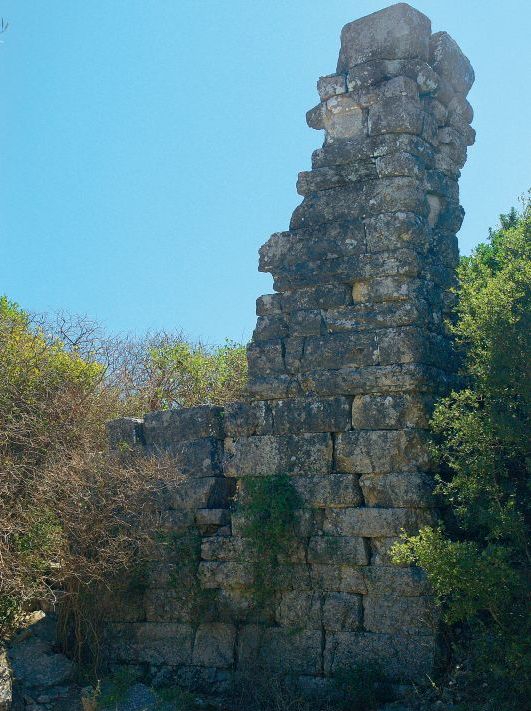
High up above the village of Poros, at the site of Pyrgi on the outskirts of a vale of olive trees, there are some ruins of an ancient farm house, dating from the Hellenistic period (325-100 BC), indicating the construction of tower houses (pyrgospita).
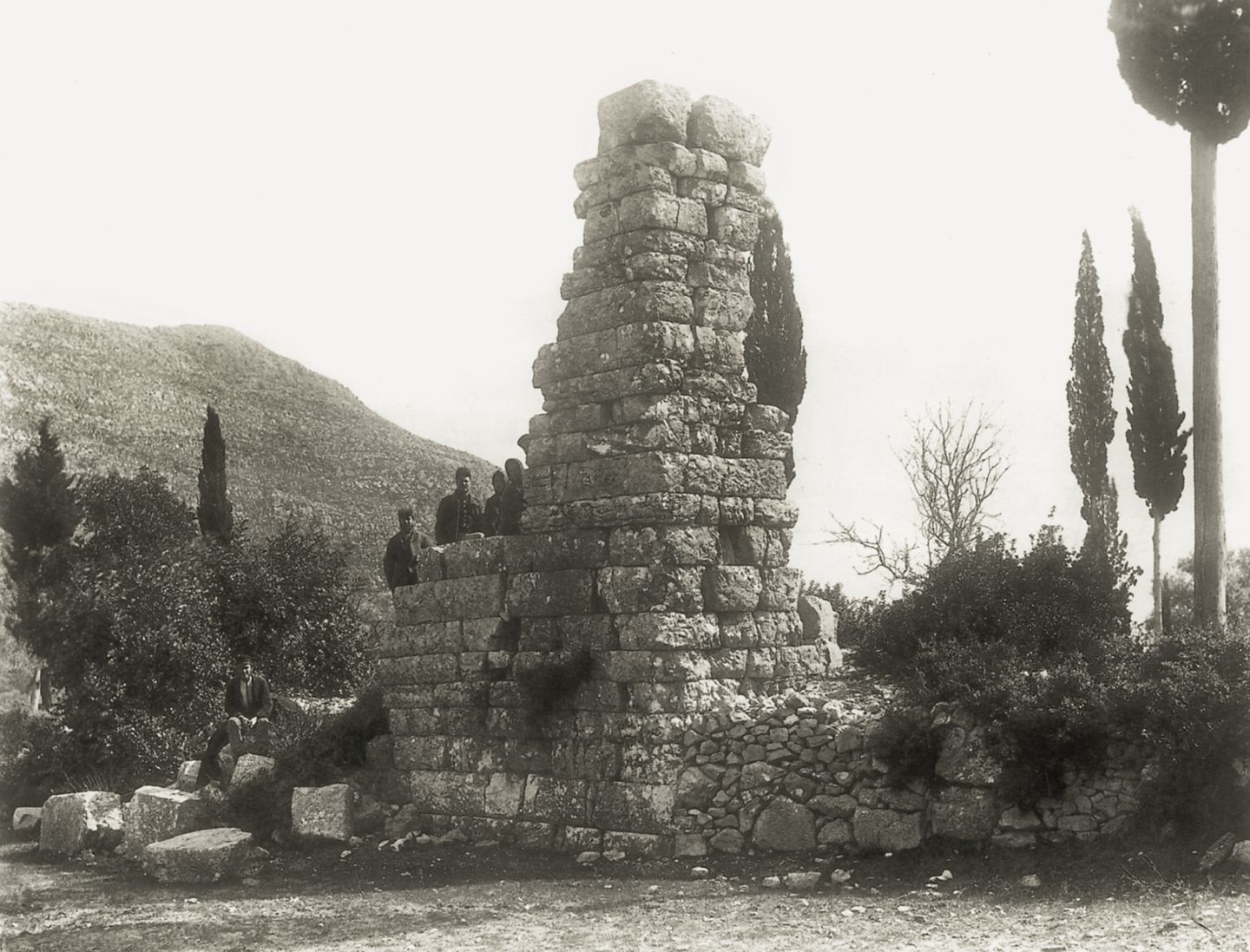
Tower near Pyrgi. Wilhelm Dörpfeld 1901. DAI Athens, D-DAI-ATH-Lefkas 38
In a cave south of the village Evgyros, Wilhelm Dörpfeld had discovered traces of prehistoric habitation, of life in the Neolithic era, which led him to surmise that this was the site of Eumaeus' (the Odyssey's swineherd) stables. The cave's name, Choirospilia (frome the greek hoiros- pig) comes from his theory.
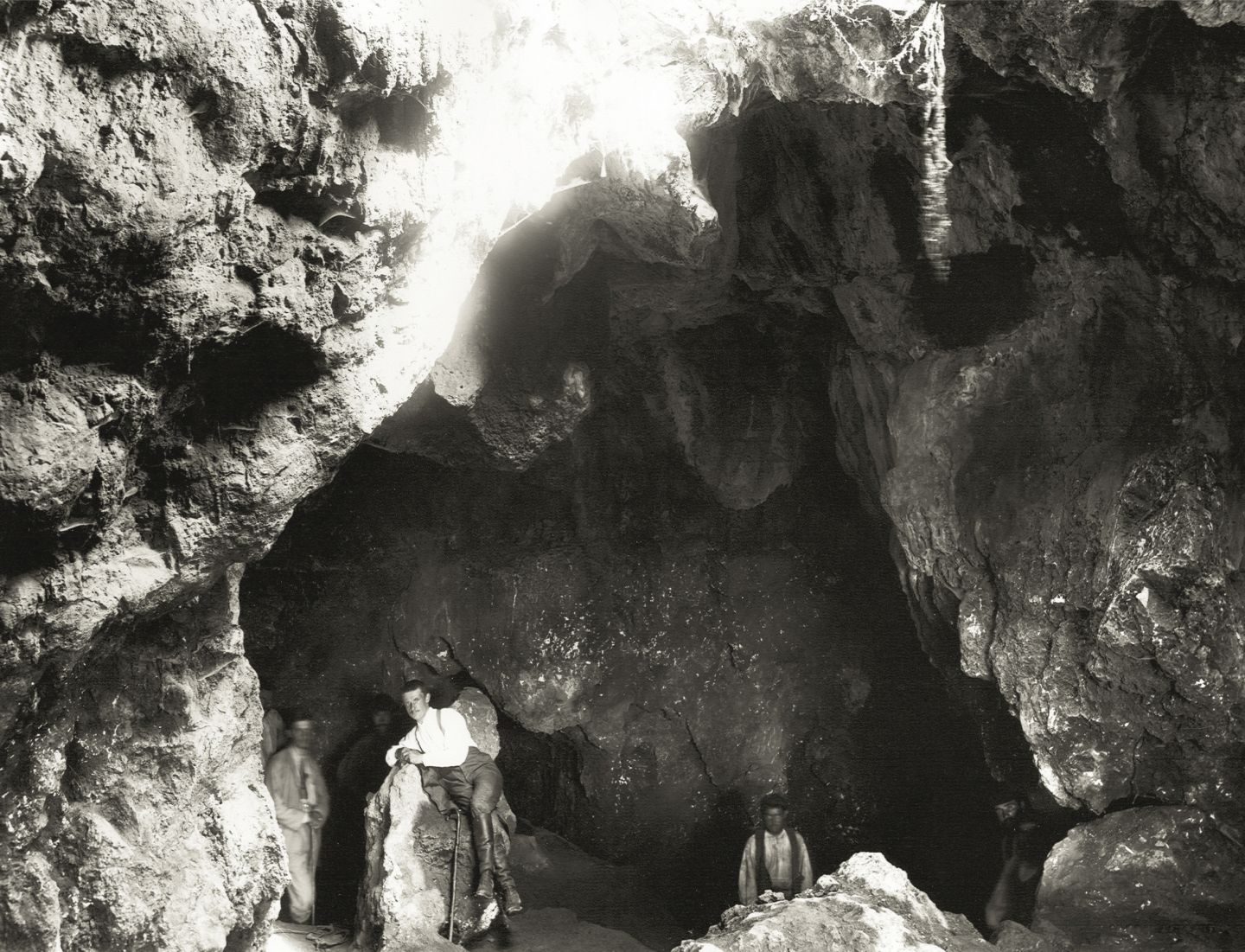
Choirospilia cave at Evgyros. Wilhelm Dörpfeld 1905. D-DAI-ATH-Lefkas
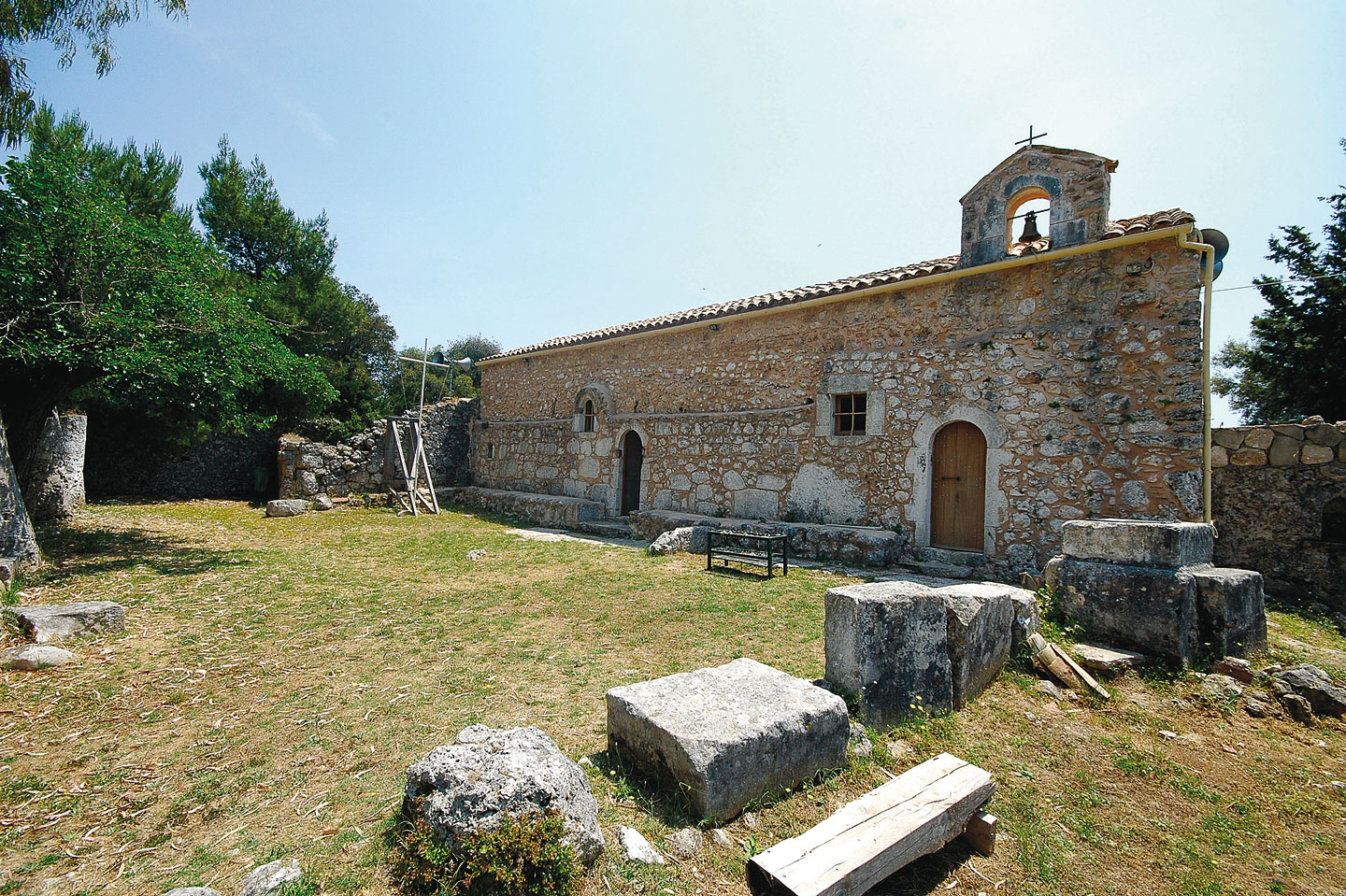
The monastery of Agios Ioannis in Rodaki is a particularly interesting spot with an exceptional vista overlooking the plain of Vassiliki and looking to the range of Agios Petros. It was probably built in 1654 by the monk Mitrophanes Chamosfakidis on the site of a doric temple dedicated to the goddess Demeter. The monastery is a blend of pagan and Christian architecture with a fascinating aesthetic result: the altar for instance rests on the capital of a column from the ancient temple and, in the churchyard, doric capitals and part of a paved flooring can be seen. The church had the reputation (doubtless because of its link with Demeter, goddess of fertility) that childless couples who prayed in the church would have a baby.
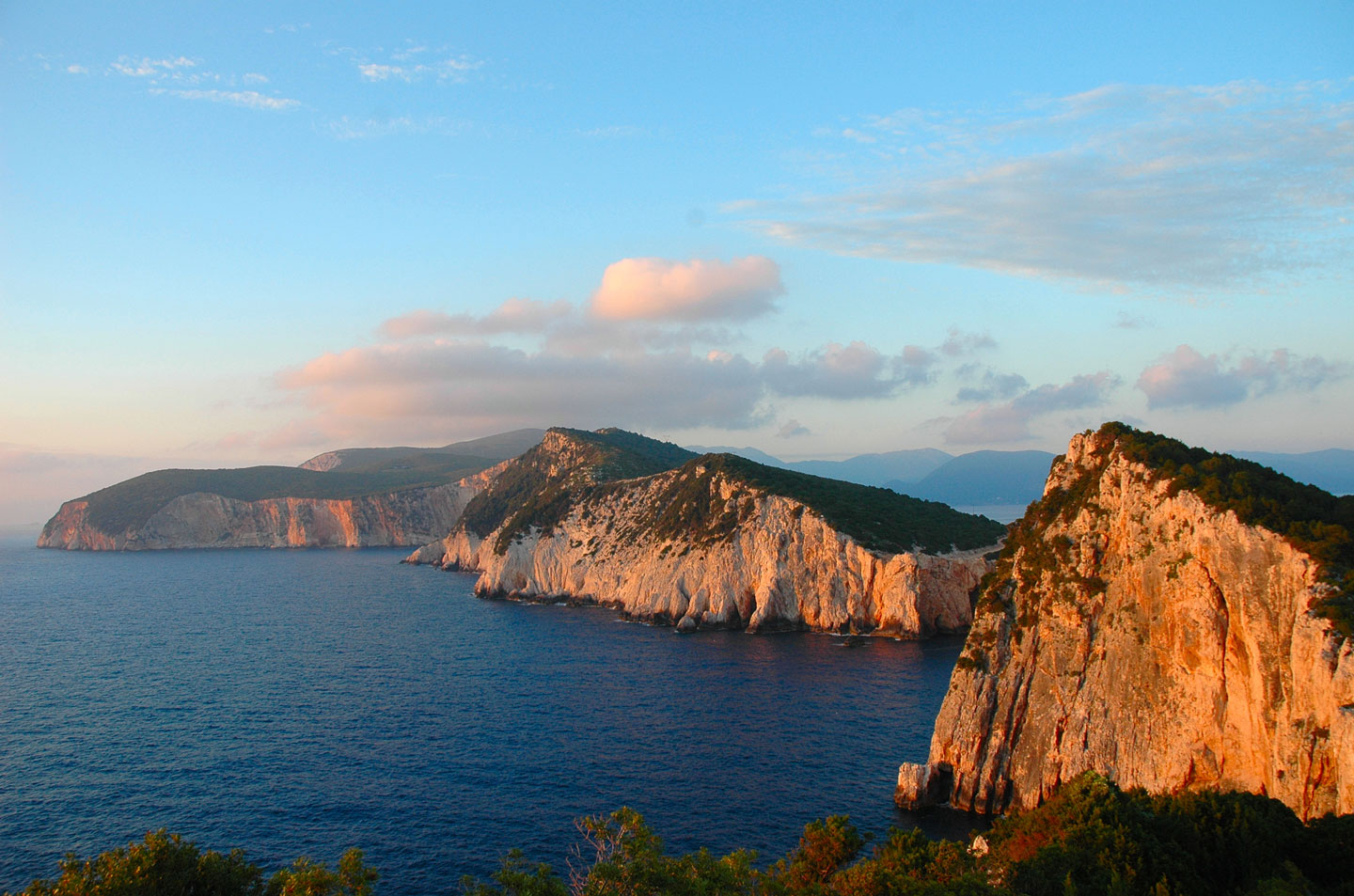
Cape Lefkatas gives the impression of having been touched by a divinity, evoking in the contemplator a feeling of eternity: here the most ancients of legends meet the mystical bretah of nature. A little further on is the cape's tall lighthouse, visible for miles, standing on the site of an ancient temple of Apollo. The temple was known throughout the ancient world and every year pan-Hellenic religious ceremonies were held to propitiate the gods of the sea, at which there were even human sacrifices. Legend connects the Cape to stories of redemption from unfulfilled love; most famously the lyric poetess Sappho threw hersef off the cliffs here to be liberated from her unrequited love for Phaon.